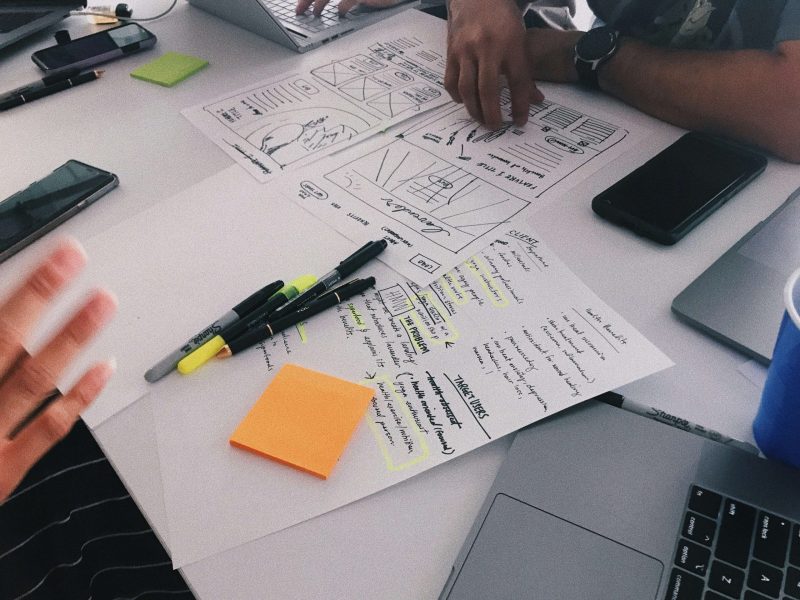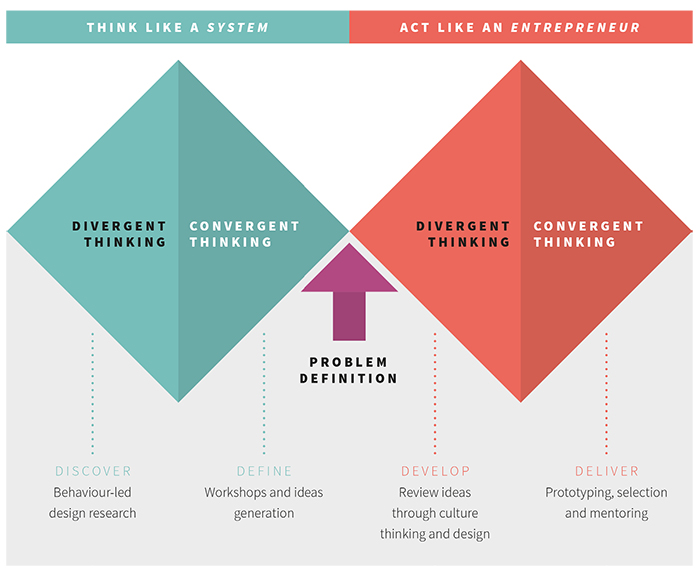A Comprehensive Guide to Human-Centered Design (HCD)
IDEO’s Human-Centered Design (HCD) methodology has revolutionized how solutions are created for real-world problems, spanning products, services, environments, organizations, and interactions.
By prioritizing the end-user, HCD ensures innovative and tailored solutions that resonate with those they are designed for. In this blog post, we’ll explore IDEO’s HCD process in detail, including its phases, steps, and real-world applications.
What is Human-Centered Design (HCD)?
IDEO defines Human-Centered Design as a creative, empathetic approach to problem-solving that begins and ends with the people you’re designing for. This methodology is about deeply understanding the end-user’s needs, challenges, and context to craft solutions that add value to their lives. Whether you’re creating a product, service, or system, HCD revolves around designing with and for the user.
IDEO emphasizes this principle in its Field Guide to Human-Centered Design, which states:
“When you understand the people you’re trying to reach and then design from their perspective, you arrive at solutions that they’ll embrace.”
The Foundations of IDEO’s HCD Process
IDEO’s HCD process operates under three key lenses:
- Desirability: What do people need, want, and dream of?
- Feasibility: What is technically possible within the constraints?
- Viability: What is economically sustainable?
These lenses shape every phase and step of the HCD journey to ensure that the resulting solutions are practical, effective, and impactful.
The Three Phases of the HCD Process
IDEO’s HCD process unfolds across three interconnected phases: Listen, Create, and Deliver.
1. Listen
The process begins by immersing in the lives of the end-users to understand their behaviors, needs, and aspirations. This phase involves:
- Empathy-building: Observing and engaging with users in their environments.
- Story collection: Listening to real-life experiences to uncover deeper insights.
- Problem identification: Defining the challenges based on user feedback.
2. Create
Armed with insights from the Listen phase, the team collaborates to generate ideas, develop prototypes, and refine solutions. This phase includes:
- Brainstorming: Encouraging creativity to ideate potential solutions.
- Prototyping: Rapidly creating tangible representations of ideas.
- Feedback loops: Testing prototypes with users to gather insights and iterate.
3. Deliver
The final phase focuses on bringing the solution to life through:
- Planning: Developing implementation strategies and business models.
- Testing: Refining the solution for scalability and impact.
- Execution: Launching the solution in the real world.
The Six Steps of IDEO’s HCD Process
Let’s dive deeper into the six steps that guide IDEO’s HCD methodology:
1. Observation
Begin by observing and engaging with your users. The goal is to:
- Understand their experiences and behaviors.
- Identify pain points and opportunities.
- Build empathy by stepping into their shoes.
2. Ideation
Leverage brainstorming to generate a wide range of ideas:
- Focus on user needs and insights from Step 1.
- Encourage creativity and collaboration within the team.
- Narrow down to ideas with the most potential.
3. Rapid Prototyping
Develop quick and simple prototypes:
- Use basic materials like cardboard or paper.
- Test ideas without committing significant resources.
- Validate concepts with users for immediate feedback.
4. User Feedback
Place prototypes in the hands of users:
- Observe how they interact with the solution.
- Collect feedback on functionality, usability, and desirability.
- Use insights to guide further iterations.
5. Iteration
Refine and improve the solution based on user feedback:
- Continue testing and evolving the design.
- Embrace multiple rounds of iteration to perfect the solution.
6. Implementation
Bring the final solution to market:
- Ensure technical feasibility and economic viability.
- Develop strategies for scalability and adoption.
- Monitor performance and revisit the process as needed.
Real-World Applications of IDEO’s HCD
Example 1: Improving Maternal and Child Health in India
IDEO collaborated with the Bill and Melinda Gates Foundation to address maternal and child health challenges in rural India:
- Listen Phase: Conducted research with health workers and mothers to understand their needs.
- Create Phase: Designed a mobile app for real-time support and a low-cost device for newborn monitoring.
- Deliver Phase: Implemented scalable, user-friendly solutions tailored to local contexts.
Example 2: Redesigning Mobile Banking Experiences
IDEO worked with a leading bank to enhance its mobile app:
- Listen Phase: Identified customer pain points through interviews and analytics.
- Create Phase: Prototyped a user-friendly, personalized interface.
- Deliver Phase: Launched an improved app, leading to increased usage and positive feedback.
Example 3: Developing a Bike-Sharing Service
IDEO partnered with a transportation company to design a commuter-friendly bike-sharing service:
- Listen Phase: Engaged with commuters to understand their transportation challenges.
- Create Phase: Prototyped an accessible, affordable system.
- Deliver Phase: Launched the service, resulting in increased adoption and customer satisfaction.
Why Choose Human-Centered Design?
HCD offers distinct advantages:
- Empathy-driven insights: Solutions are deeply rooted in real user needs.
- Collaborative innovation: Teams work together to harness diverse perspectives.
- Iterative improvements: Continuous testing ensures solutions are refined and effective.
SEO Tips for HCD Enthusiasts
To maximize the reach of your HCD content, follow these SEO best practices:
- Use targeted keywords like “Human-Centered Design,” “IDEO HCD process,” and “design thinking methodology.”
- Create descriptive headings and subheadings.
- Incorporate internal and external links to reputable sources, such as:
- Optimize images with alt text and captions.
- Include a call-to-action (CTA) encouraging readers to explore more about HCD.
Conclusion
IDEO’s Human-Centered Design process offers a transformative approach to problem-solving. By prioritizing empathy, collaboration, and iteration, HCD ensures solutions are not only innovative but also practical and impactful.
Whether improving health services, creating digital products, or designing user-friendly systems, IDEO’s methodology demonstrates the power of designing for people, by people.
Ready to explore HCD further? Check out IDEO’s resources and start transforming your creative process today!
Want to know more about How IDEO’s Design-Thinking Methodology Supports Innovative Solutions to Global Challenges, you should read this post.


